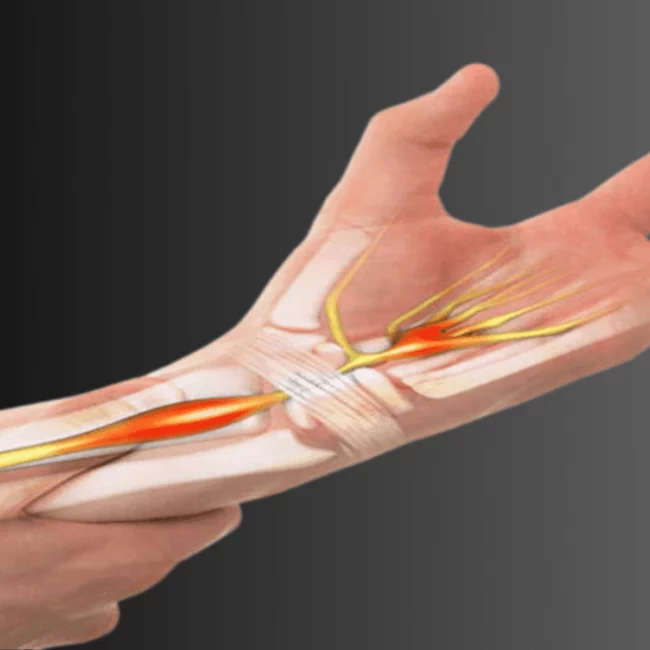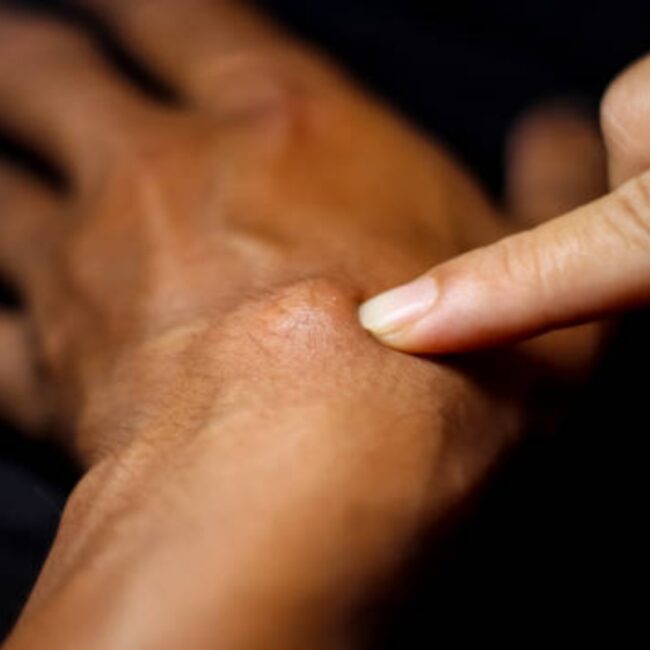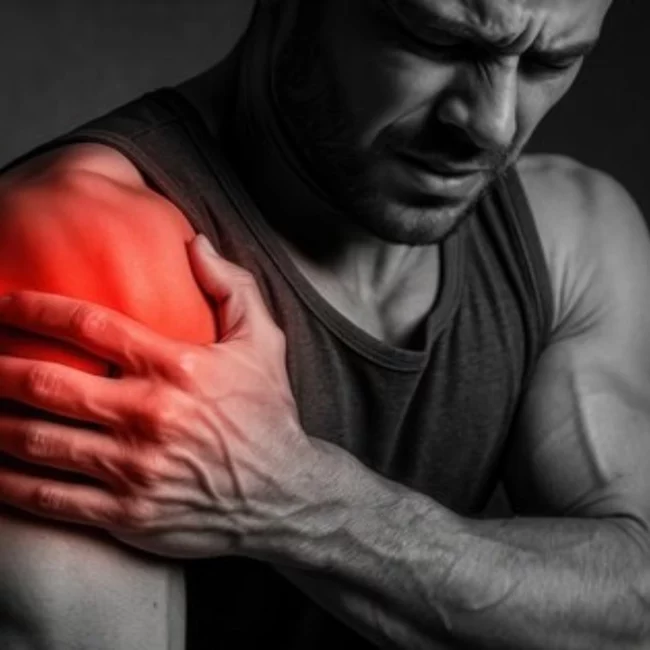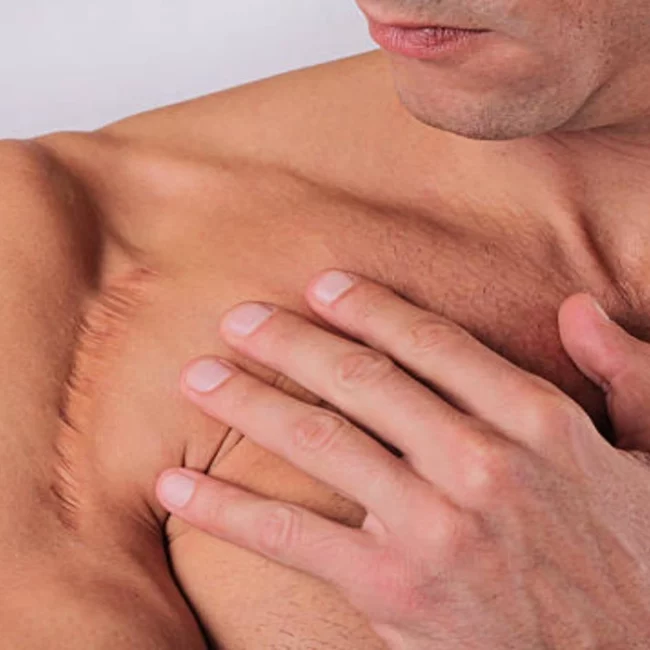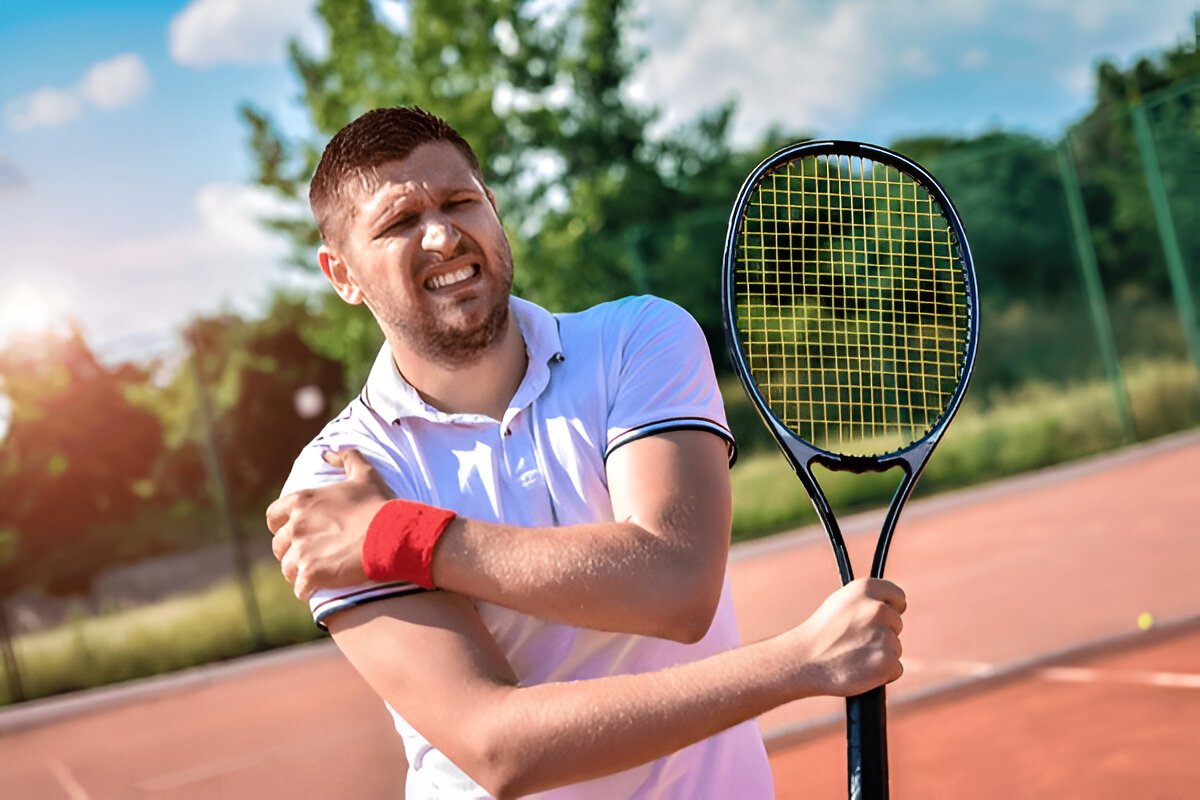
Sports-Related Shoulder Injuries: When Surgery Becomes Necessary
The shoulder joint is one of the most versatile and mobile parts of the human body, allowing for a wide range of motion. However, this flexibility also makes it one of the most susceptible to injuries, especially for athletes engaged in high-impact or repetitive-motion sports.
From rotator cuff tears to shoulder dislocations, sports-related shoulder injuries can be painful, limiting, and career-threatening if not managed properly. Non-surgical treatments like rest, physiotherapy, and rehabilitation exercises can often restore function, but some severe injuries require surgical intervention to ensure a complete recovery and prevent long-term damage.
In this comprehensive guide, we will cover:
- Common shoulder injuries in sports
- Signs that indicate surgery might be necessary
- Different surgical options for sports-related shoulder injuries
- Rehabilitation and recovery process after surgery
- FAQs about shoulder injuries in athletes
If you’re an athlete struggling with shoulder pain, instability, or restricted movement, this article will help you understand when surgery is needed and what you can do to get back to peak performance.
Understanding Sports-Related Shoulder Injuries
Athletes often push their shoulders to extreme limits, leading to acute trauma or chronic overuse injuries. The nature of the sport often determines the type of injury, with overhead sports, contact sports, and high-impact sports carrying the highest risk.
High-Risk Sports for Shoulder Injuries
Certain sports place excessive stress on the shoulder joint, making injuries more common. These include:
- Basketball – Constant jumping, overhead passing, and blocking can strain the shoulder.
- Baseball & Cricket – Repetitive throwing motions contribute to rotator cuff tears and SLAP tears.
- Volleyball – High-impact serves and spikes cause labral injuries and shoulder instability.
- Swimming – Continuous overhead strokes (butterfly, freestyle) can cause shoulder impingement syndrome.
- Weightlifting – Heavy overhead lifting can lead to shoulder dislocations and rotator cuff damage.
- Wrestling & Rugby – Direct impact and forceful twisting increase the risk of shoulder separations and fractures.
Athletes in these sports are at higher risk of injury, and understanding which injuries are common is key to early diagnosis and effective treatment.
Common Shoulder Injuries in Sports
1. Shoulder Dislocation
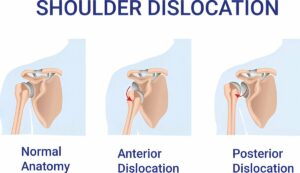
A shoulder dislocation happens when the humerus (upper arm bone) pops out of the shoulder socket due to a forceful impact or extreme rotation.
Causes:
- A hard fall on an outstretched arm.
- A strong impact (e.g., rugby tackle, wrestling throw).
- A sudden twisting motion of the arm.
Symptoms:
- Intense pain and swelling.
- A visibly deformed or displaced shoulder joint.
- Inability to move the arm.
Treatment Options:
- Closed reduction (manually placing the bone back in the socket).
- Physiotherapy to strengthen surrounding muscles (for first-time dislocations).
- Surgery for recurrent dislocations (Bankart repair, Latarjet procedure).
2. Rotator Cuff Tears
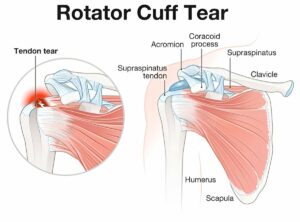
The rotator cuff is a group of four muscles that stabilise the shoulder and help in lifting and rotating the arm. Tears can occur gradually due to overuse or suddenly due to trauma.
Causes:
- Repetitive overhead motions (e.g., swimming, baseball, cricket).
- Heavy lifting.
- Falling on an outstretched arm.
Symptoms:
- Persistent pain, especially when lifting the arm.
- Weakness in the shoulder.
- Clicking or grinding sensation.
Treatment Options:
- Partial tears – Physiotherapy, anti-inflammatory medications, and rest.
- Complete tears – Require arthroscopic rotator cuff repair surgery.
3. SLAP Tears (Superior Labrum Anterior to Posterior Tears)
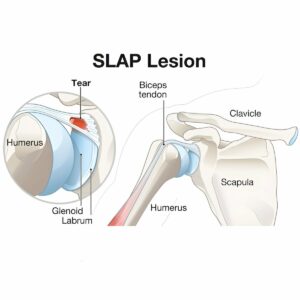
A SLAP tear affects the cartilage (labrum) surrounding the shoulder socket and is common in throwing athletes and weightlifters.
Causes:
- Repetitive overhead movements.
- Falling onto an outstretched arm.
- Sudden heavy lifting.
Symptoms:
- Deep pain in the shoulder.
- Feeling of instability or catching in the joint.
- Reduced range of motion.
Treatment Options:
- Mild tears – Treated with rest, anti-inflammatory drugs, and physiotherapy.
- Severe SLAP tears – Require arthroscopic labral repair.
4. Shoulder Impingement Syndrome
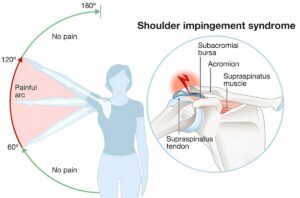
Occurs when the rotator cuff tendons get pinched (impinged) between the shoulder bones, causing pain and inflammation.
Causes:
- Repetitive overhead activities (swimming, tennis, baseball).
- Poor posture and weak shoulder muscles.
Symptoms:
- Pain when lifting the arm above shoulder level.
- Weakness and stiffness in the shoulder.
Treatment Options:
- Conservative treatment – Rest, physiotherapy, cortisone injections.
- Surgical option – Arthroscopic decompression surgery if symptoms persist.
When Does Surgery Become Necessary?
Many sports-related shoulder injuries can heal with conservative treatments like rest, physiotherapy, and rehabilitation exercises. However, surgery becomes necessary in the following situations:
1. The Injury is Severe and Cannot Heal on Its Own
Some injuries involve significant structural damage, such as complete ligament or tendon tears, fractures, or severe labral damage. These injuries will not heal properly without surgical repair.
Example:
- A full-thickness rotator cuff tear means the tendon has fully detached from the bone, requiring surgical reattachment.
- A displaced shoulder fracture will not heal correctly without surgical alignment and fixation.
2. The Shoulder is Chronically Unstable
If an athlete experiences repeated shoulder dislocations, it indicates chronic instability caused by torn ligaments or damaged labrum. In such cases, surgical stabilisation is required to restore normal shoulder function and prevent further dislocations.
Example:
- A rugby player who has had multiple shoulder dislocations during tackles may need a Bankart repair or Latarjet procedure to stabilise the shoulder joint.
3. The Athlete Experiences Persistent Pain and Limited Mobility
If pain, stiffness, and weakness continue for months despite physiotherapy and medication, surgery may be necessary to restore proper movement and eliminate pain.
Example:
- A cricketer with a SLAP tear who experiences persistent pain and clicking despite rehabilitation may need arthroscopic labral repair.
4. Conservative Treatments Have Failed
If an athlete has undergone months of non-surgical treatment (rest, physiotherapy, cortisone injections) with little or no improvement, surgery may be the best option for a full recovery.
Example:
- A swimmer with impingement syndrome who has tried 6 months of physiotherapy but still struggles with overhead movements may need arthroscopic decompression surgery.
5. The Athlete Needs a Quick and Reliable Return to Sport
High-level or professional athletes cannot afford long-term shoulder instability or weakness. In some cases, surgery offers the best chance for a strong, long-term recovery, allowing athletes to return to competition without limitations.
Example:
- A tennis player with a severe rotator cuff tear may opt for surgery rather than a long rehabilitation period with uncertain results
Surgical Treatments for Sports Shoulder Injuries
1. Arthroscopic Rotator Cuff Repair
For: Complete rotator cuff tears.
Procedure: Small incisions are made, and a camera (arthroscope) is used to guide the tendon reattachment.
2. Shoulder Stabilisation Surgery (Bankart Repair)
For: Recurrent shoulder dislocations.
Procedure: Repairs torn ligaments and tightens the joint capsule.
3. SLAP Tear Repair
For: Severe SLAP tears affecting overhead athletes.
Procedure: Arthroscopic repair using sutures.
4. Shoulder Decompression Surgery
For: Chronic impingement syndrome.
Procedure: Removes bone spurs or inflamed tissue.
Rehabilitation and Recovery After Surgery
A structured rehabilitation plan includes:
Weeks 1-4: Immobilisation (sling, passive motion).
Weeks 4-8: Mobility restoration (stretching, light exercises).
Weeks 8-16: Strength training.
Months 4-6: Return to sports.
Why Choose Dr. Marouane for Shoulder Surgery?
Choosing the right specialist is critical for a successful recovery. Dr. Marouane is a leading orthopaedic surgeon known for his expertise in sports injuries and minimally invasive shoulder surgery.
1. Extensive Experience in Sports Shoulder Surgery
Dr. Marouane has treated numerous professional and amateur athletes, helping them return to their sport with optimal performance and function.
2. Advanced Minimally Invasive Techniques
Specialises in arthroscopic surgery, reducing pain, scarring, and recovery time.
Uses the latest medical technology for precise and effective procedures.
3. Personalised Treatment Plans
Every patient receives a customised rehabilitation plan for the fastest recovery possible.
4. High Success Rates and Proven Results
Patients experience faster healing, reduced pain, and excellent long-term outcomes.
5. Comprehensive Post-Surgery Support
Dr. Marouane and his team closely monitor patient progress, ensuring a smooth recovery.
Frequently Asked Questions (FAQs)
1. How long does it take to recover from shoulder surgery?
Most athletes recover within 4-6 months, but full strength and performance can take up to a year.
2. Will I regain full mobility after shoulder surgery?
Yes, with proper rehabilitation, most patients regain 80-100% of their shoulder function.
3. Can I avoid surgery for a torn rotator cuff?
Partial tears may heal with physiotherapy, but full-thickness tears require surgery for complete recovery.
4. What happens if I ignore a shoulder injury?
Ignoring a serious injury can lead to chronic pain, weakness, and long-term joint damage, making surgery more complicated later.
5. When can I start exercising again after surgery?
Light exercises begin within 4-6 weeks, but full sports activities typically resume at 4-6 months post-surgery.
6. Can shoulder surgery prevent future injuries?
Yes, surgical stabilisation reduces the risk of recurrent dislocations and improves long-term joint stability.
Final Thoughts: Getting Back in the Game
If you’re an athlete dealing with persistent shoulder pain, weakness, or instability, don’t ignore the signs. Early diagnosis and timely surgical intervention (if needed) can help you return to peak performance safely and efficiently.
The right treatment today can prevent lifelong shoulder problems tomorrow!
Expert care, tailored for you! Book your consultation with Dr. Marouane today at +971 54 422 6123



